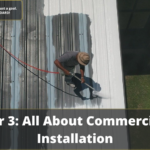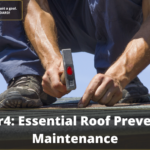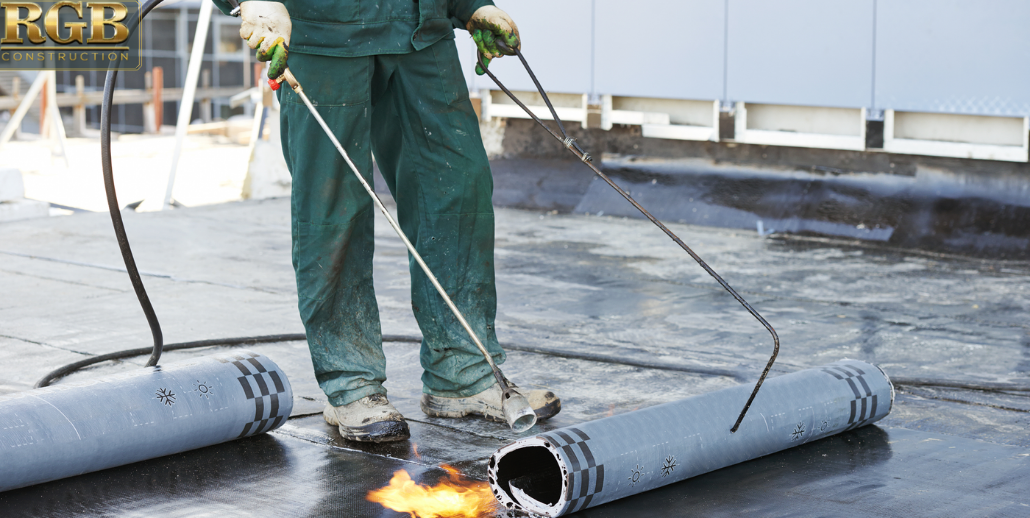Commercial roofing is often thought of in terms of black versus white. In other words, non-reflective black roofing or light-colored reflective roofing. These days, you can’t simply divide them up by color, because there are new technologies and dozens of roofing types to choose from. If you are looking for commercial roofing types, look no further. We have outlined the most popular—and even a few less common types—in this second chapter of The Ultimate Guide to Commercial Roofing.
Let’s get started.
What Is Commercial Roofing?
The technical definition of commercial roofing is any type of material that can be used to seal the rooftops of a commercial facility or building against the elements. Commercial roofing can be in the form of any number of materials, but the ones you can choose depend on the slope of the roof.
If the roof is flat, you cannot expect shingles to be available. Instead, you will need to choose a material purposely made for a flat surface.
What Are The Different Types of Commercial Roofing?
Now, let’s break down some of the more common types of commercial roofing materials out there.
Built-Up Roofing (BUR)
What is the traditional type of commercial roofing? For more than 120 years, built-up roofing (BUR) has been used on American facilities throughout the nation. Today, it is still frequently used. Why? Because BUR lasts a long time, requires minimal effort to repair, and is also cost-effective. The one thing that prevents BUR from snagging first place as the best kind of commercial roofing is its lack of modern technologies, including things like reflectivity.
BUR uses multiple layers of fabric, known as piles, that are alternated between tar or bitumen and an aggregate to develop a waterproof roof. You may sometimes hear BUR roofing called “tar and gravel” roofs, because of the materials that are sandwiched together.
Modified Bitumen (Mod Bit)
A bit more modern than BUR but closely related, modified bitumen roofing is slightly more versatile. It can be applied with heat via torches, but more modern installation methods use “cold process” self-adhesive sheets. That removes any need for heat, simplifying installation.
Spray Polyurethane Foam Roofing (SPF)
A more eco-friendly option for commercial roofing would be Spray Polyurethane Foam. You can use it for any kind of industrial, manufacturing, or commercial building, so long as it is flatter. Spray Polyurethane Foam, also known as SPF, has a unique application. The contractors will spray a solution atop the roof that then expands into a pliable foam. Once it expands, it becomes a single layer over the roof.
Interestingly, SPF is not the most popular, but the technology has been around since the 1960s when it was used for all kinds of roofing, both residential and commercial. When properly installed, SPF roofing has a lifespan of about 50 years in any kind of climate.
A couple of things to love about Spray Polyurethane Foam:
- It is energy-efficient because it provides moisture, air, and thermal barrier. SPF provides the highest R-value of all commercial roofing materials.
- Seamless, waterproof, and durable, SPF has a low chance of forming cracks.
Single-Ply Membrane Roofing
A preferred type of commercial roofing would be single-ply membranes. This kind of roofing involves rubber or another synthetic material that is ballasted to the roof. To ballast, something means to either mechanically or chemically adhere it. In the case of single-ply membranes, the uppermost layer gets connected to the insulation underneath.
There are two predominant types of single-ply membranes: thermoplastics and thermosets. Thermoplastics include TPO and PVC. Both are excellent choices for facilities that get a lot of sun exposure. They also resist punctures, bacteria, oils, and chemicals.
On the other end of the spectrum are thermoset materials. Ethylene Propylene Diene Monomer (EPDM) has the fortitude and does not expand or contract due to temperature or sun exposure.
Metal Roofing
One of the oldest forms of commercial roofing is metal. You often do not see this used on roofs with a lower slope. Metal roofs use corrugated steel, though, in recent years, tin and aluminum have become more popular. Aluminum is less likely to rust, but it may get dented more easily.
Metal roofing is also lightweight compared to some other materials. This means you can have it installed over an existing roof. Upon installing a metal roof, the contractors will use a waterproof coating, as well as rust and UV protection.
Although metal roofing does come with a higher price tag, you can choose from a number of colors and designs. Metal is also very stable and energy-efficient, meaning you may save some money on heating and cooling costs. Lastly, metal panels are fire-resistant.
Garden Roofing
Want to go green—literally? You might want to consider garden roofs. These roofs utilize vegetation, making the flat roof of your facilities into a beautiful garden. Garden roofs can become a daytime sanctuary for your employees, especially when they are maintained throughout the year. The downside is that garden roofing does require a large amount of money to properly set up, and that can leave you with little wiggle room in your budget.
Need Help Selecting A Roofing Material?
Choosing the best roofing material comes down to knowing, first, the slope of your business. Location, climate, and other environmental factors will eliminate some of the choices for you. From there, find the commercial roofing type that suits your needs and budget the best.
Talk to RGB Construction today. We have been serving the region for many years, so we know which materials will serve your building the best. Whether you are looking for a more eco-friendly option or want to save as much money as possible, we can help you make the right decision.
Check Out Our Other Chapters Of “The Ultimate Guide To Commercial Roofing” Below!
Chapter 1: Careers in Commercial Roofing
Want to learn more about what goes into becoming a commercial roofer? This chapter goes into detail about what a role as a commercial roofing contractor entails.
 Chapter 3: All About Commercial Roof Installation
Chapter 3: All About Commercial Roof Installation
Ready to have your new commercial roof installed? Get the facts before the installation team arrives. In this chapter, we outline the process step-by-step, hopefully eliminating any questions or concerns you might have.
 Chapter 4: Essential Roof Preventative Maintenance
Chapter 4: Essential Roof Preventative Maintenance
Preventative maintenance is essential to prolonging the life of any roof. Learn some helpful steps.
 Chapter 5: Is It Time for Replacement or Can Your Commercial Roof be Repaired?
Chapter 5: Is It Time for Replacement or Can Your Commercial Roof be Repaired?
Do you know when it is time to say goodbye to your current roof? We are going to explain some of the tell-tale signs to watch out for. Also, you will learn about different methods of repair, restoration, and replacement available.










